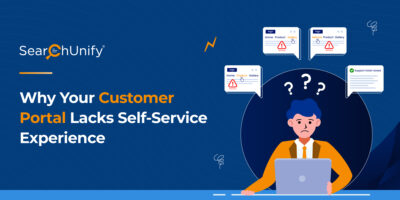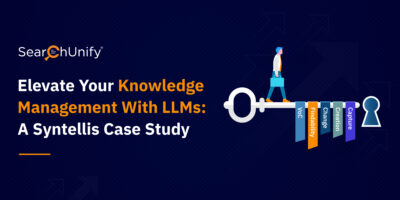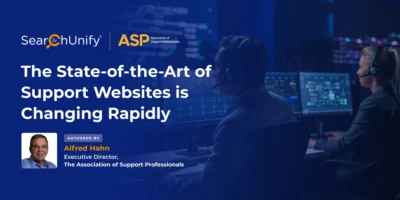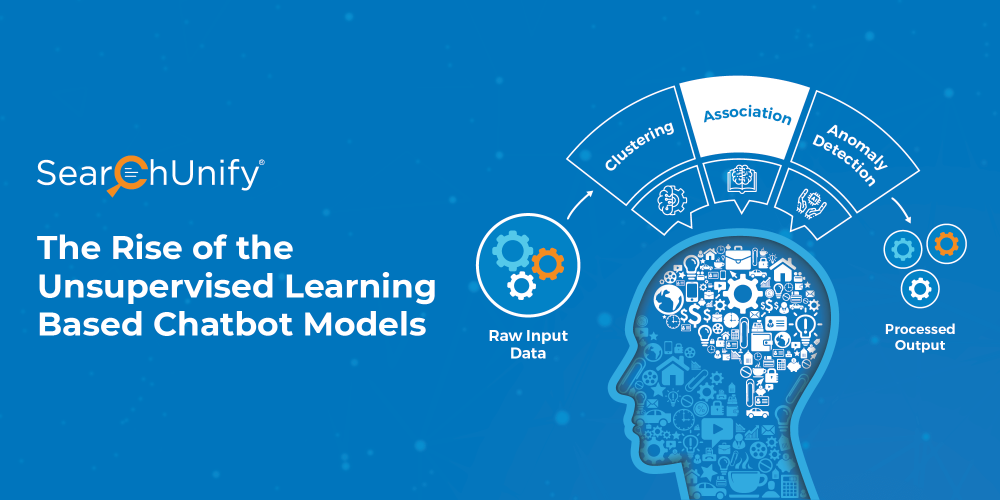
The worldwide chatbot market is projected to amount to 454.8 million U.S. dollars in revenue by 2027, up from 40.9 million dollars in 2018.
The digital world has seen three generations of chatbot technology. The first two chatbot generations were based on a predefined set of rules and supervised machine learning models. While the first succumbed to meaningless responses for undefined questions, the second required extensive data labeling for training. Users became frustrated with chatbot responses and attributed the failure to over‑promising and under‑delivering.
The latest chatbot generation has learned from these mistakes and is based on adaptive, unsupervised learning. These chatbots are powered by artificial intelligence and they are built on self‑learning algorithms that learn from unlabeled data. These new‑age bots combine the advantages of previous bots with unsupervised machine learning to handle complex conversations. How? This blog post blows the gaff.
Supervised Vs. Unsupervised Learning
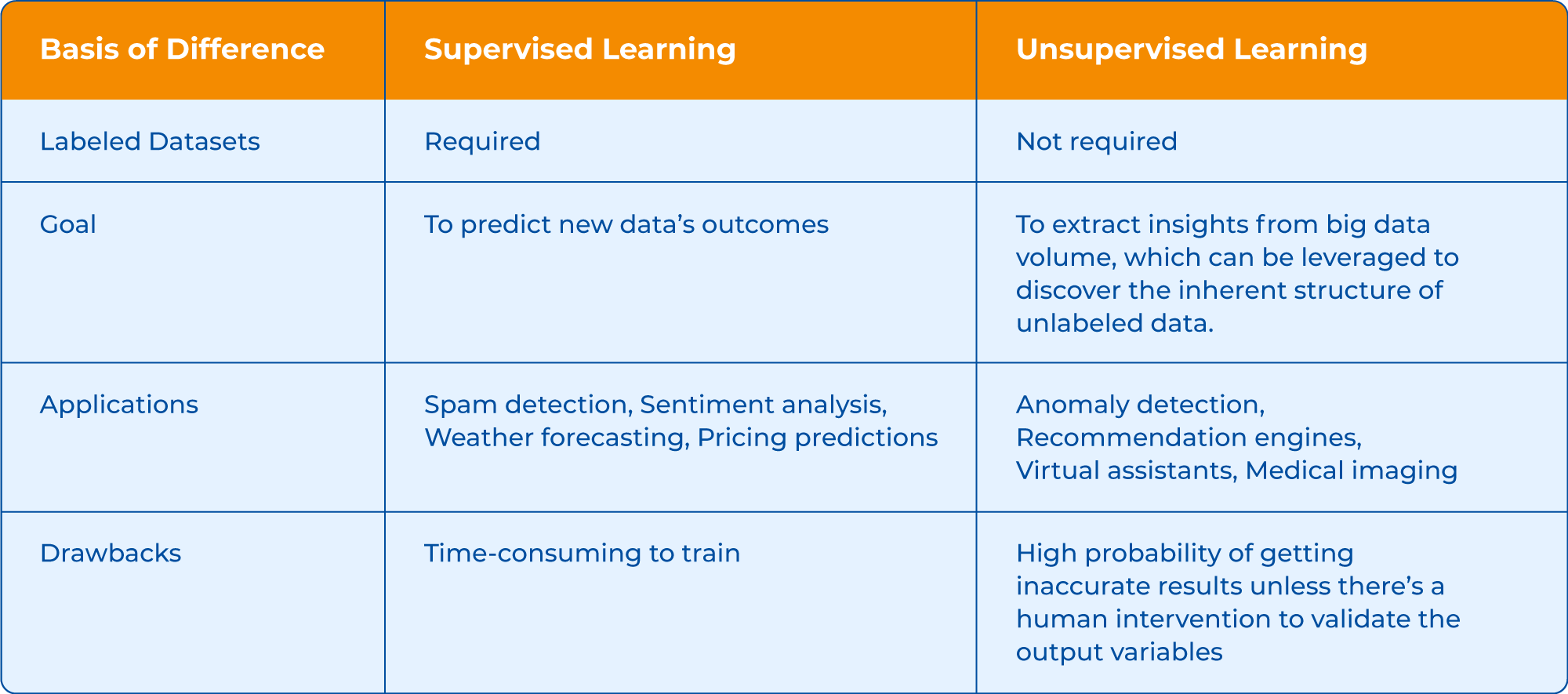
Unsupervised Learning: What Does It Mean in the Chatbot Context?
Supervised machine learning depends on the manual labeling of data sets. While it might seem easy at first, as the inflow of conversations and data grows, it becomes dreadful. Also, this requires a supervisor, an expert who is constantly tagging the conversation data to a chatbot. Hence, it becomes expensive after a while to train chatbots using this model. And that too when the nature of user queries is only going to vary more with time.
On the contrary, AI‑powered chatbots leverage unsupervised machine learning and natural language processing for intent detection and entity extraction in user utterances. They analyze the raw data and classify it into clusters based on similarities. Thus, doing the heavy lifting and eliminating significant manual efforts.
Let’s say a support organization is swamped with thousands of unlabeled tickets. Unsupervised learning algorithms will enable semantic processing to understand the correlation of words between different ticket subjects. Then, based on its processing and analysis, these tickets will be categorized into natural clusters based on the similarities identified from the subject lines. Once the clusters are formed, user intent and utterances are taken into account to display relevant results.
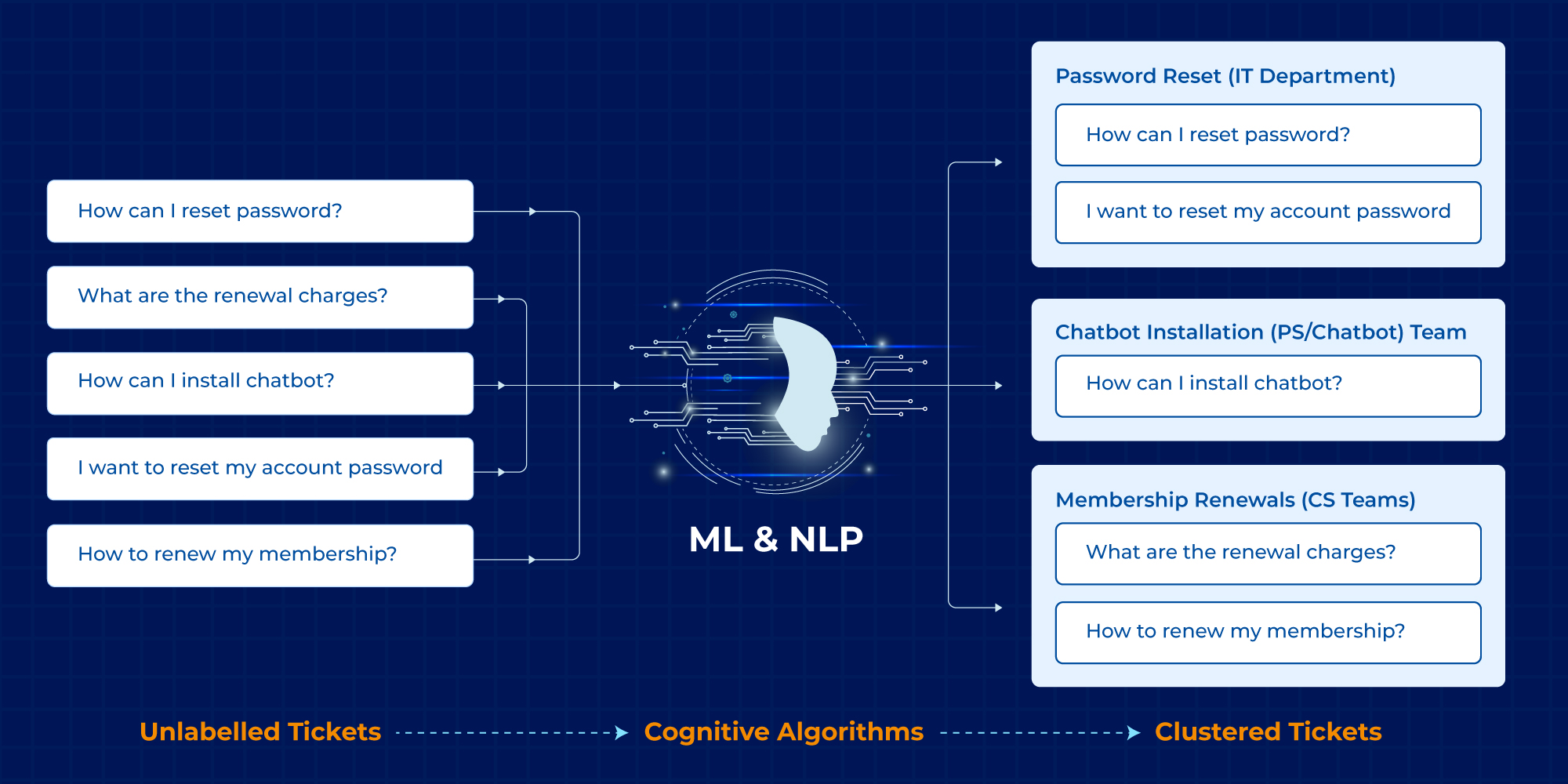
Unsupervised, Yet Controlled Learning Is the Way to Go
It’s important to note that before adopting or changing your chatbot project, an organization needs to have access to unified knowledge. Here’s why. If you have a unified cognitive platform embedded, you can index and surface content residing in any repository, regardless of the format, in one place. Now, a chatbot built on top of a federated search will gather queries or utterances and club them under separate categories on its own. After that, the bot will create the intent itself and suggest to your experts or admins; “Hey, I have created two intents. Accept them or reject them.” If you want to dive deeper into this topic, here’s the perfect ebook.
In a nutshell, the chatbots based on unsupervised learning models recognize patterns and extract intent from searched data, on their own. Then, they offer intent suggestions to admins/data experts.
But what’s interesting to note is, with AI‑driven bots you also get real‑time insights that provide data on metrics such as user interaction, intents, etc.
Consider this example:
Intent one: Reward points not credited to my account
Intent two: Order history deleted for my account
If intent one gets 150 hits and intent two only 2 or 3, then you can add more utterances in intent one and make it more useful for future incoming queries. This is what makes quick and accurate user interactions possible.
Some chatbot solutions come with reports that provide the total users who interacted with the chatbot during a selected period of time. In addition to it, they offer real‑time analytics that shows current interactions. These reports not only give insights into user behavior but also assess bot performance so that you can continually tweak your bot with minimum efforts to get better results.
The Bottom Line
As the data in your company will explode, chatbots based on artificial intelligence and unsupervised machine learning will save the day. With this model, the chatbots self‑learn and improve as and when more data is fed to them.
Intelligent bots reduce the amount of training time, administration, and maintenance needed and still elevate the quality of customer interactions. These chatbots have multiple use cases ranging from support, services to the e‑commerce business. And the best part–very less human supervision and no manual explicit data tagging.
What’s Next?
So far we have discussed the ins and outs of unsupervised learning and understood how it saves the manual efforts of labeling data. On the other hand, the present scenario takes into consideration – “user intent” and “increasing model accuracy”.For this, ways like zero-shot prompting, few-shot prompting, and synthetic data generation proved to be helpful. Let’s understand how:
Zero-shot and few-shot prompting
The unsupervised learning model analyzes unlabelled data and identifies patterns, structures, and relationships within the data, including understanding the semantics, syntax, and context. This knowledge is further used by zero-shot prompting or few-shot prompting to improve its ability to infer context and intent from the prompts and understand the instructions. In few-shot prompting unlike zero-shot prompting, a few examples are provided to guide the model.
Model Fine Tuning
In case of unavailability of sufficient data, along with the LLM predictions, there is a need for internal model as well. For this few-shot prompting is used to generate synthetic data for each label. This synthetic data is thus utilized to train the internal model leading to more accurate intent predictions. Thus, we can say that this synthetic data generation improves the model’s accuracy.
Need Help to Navigate the Confusing and Crowded Chatbot Marketplace?
TSIA says, “Unless AI is your company’s core competency, don’t build it yourself.” We were cited as “Best‑of‑breed providers” in their research report – The Chatbot Comeback. Since we include language libraries and packaged AI/ML, it allows rapid implementations and good results without a team of data scientists on staff. It has been improved more to adapt to the evolving digital landscape, download this datasheet to know what makes our SUVA unique.

